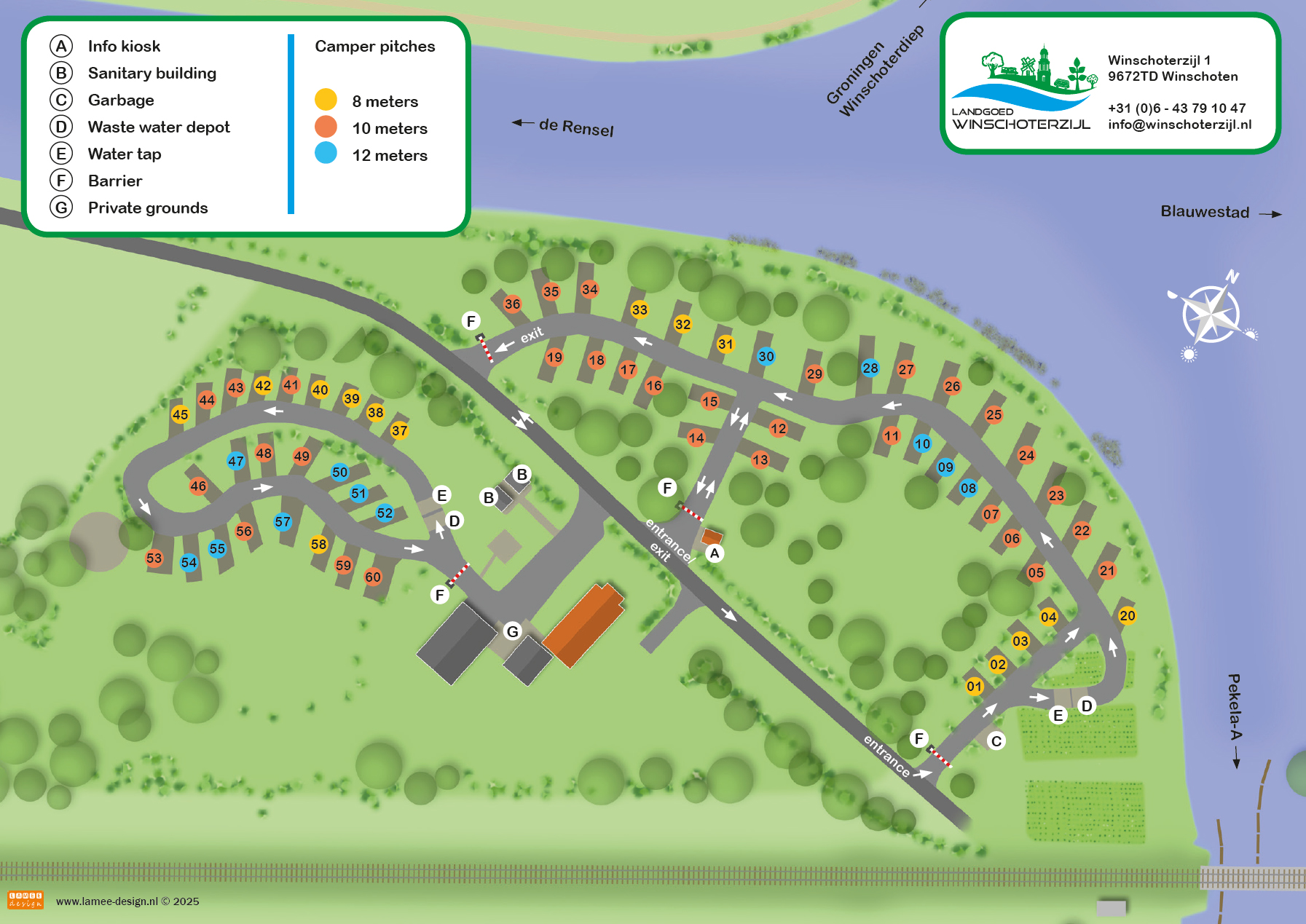View the map of Camperpark Landgoed Winschoterzijl here.

Please note:
Winschoterzijl was once a lively hamlet in the municipality of Oldambt, in the northeast of the Netherlands. It served as a fortress and still has a lock that reminds of its past. During the Thirty Years` War, Lutheran refugees from East Frisia found refuge here, away from the conflicts in their own country. In 1992, when the Pekel A was widened, Winschoterzijl was demolished and the hamlet disappeared.
The history of Winschoterzijl begins at the confluence of the Rensel and Pekel A rivers, where a lock was built to regulate the water. Soon the river was canalized and widened, which stimulated the development of the region. Not much later, a fortress was built, a fortification to protect the province of Groningen against enemy attacks.
Winschoterzijl as a safe haven
Meanwhile, a religious war was raging in East Friesland. Lutheran refugees found a safe haven in Winschoterzijl, because the area was ruled by the Princes of Orange who accepted their faith. This is in contrast to the city of Groningen, which did not admit refugees. One day the Münster army attacked Groningen and captured Winschoterzijl and the nearby town of Winschoten. But the Dutch State Army took action, launched a counterattack and liberated the hamlet.
Winschoterzijl continued to develop and had a Lutheran church, followed by a Catholic church. The arrival of two windmills, intended as wind pumps, gave the village an extra boost. One of these mills, the Olde Molen, burned down, was rebuilt and later even moved to Palm Beach, Aruba.
A close-knit community and the Van Gogh bridge
Although Winschoterzijl remained a small village, it was a lively community. The church was eventually moved to Winschoten and the hamlet had only 69 inhabitants. The construction of the Van Gogh Bridge brought some fame, although the origin of the name remains unclear.
The widening of the Pekel A in 1992 meant the end of Winschoterzijl. The last house was demolished and the Van Gogh Bridge was moved to Winschoten. The hamlet was officially dissolved, but the legacy lives on now that a camper park has been opened here.
The lock, still known as Winschoterzijl, remains a beautiful and tangible reminder of the past. A few farms are still left, these are on Winschoter territory, and in 2013 the municipality of Bellingwedde placed a city boundary sign at what remains.
The camper park is located in the middle of greenery and on the water. The only sound you hear comes from nature and from the train, which runs on the track constructed through Winschoterzijl (over the bridge). The recreation company is run from the nearby farm Landgoed Winschoterzijl, and offers lovers of peace and space the opportunity to spend the night in a beautiful place with the turbulent past of a disappeared hamlet. Rest times are guaranteed by means of the house rules described in our regulations.
Adrillen 2025 - Recognizable as always, cozy as never before October 20, 2025 General On Monday, November 3, 2025, the city center of Winschoten will once again be transformed into the famous market... read more »
From October 15, 2025, the park will have 10 amps, which means 2300 watts.... read more »